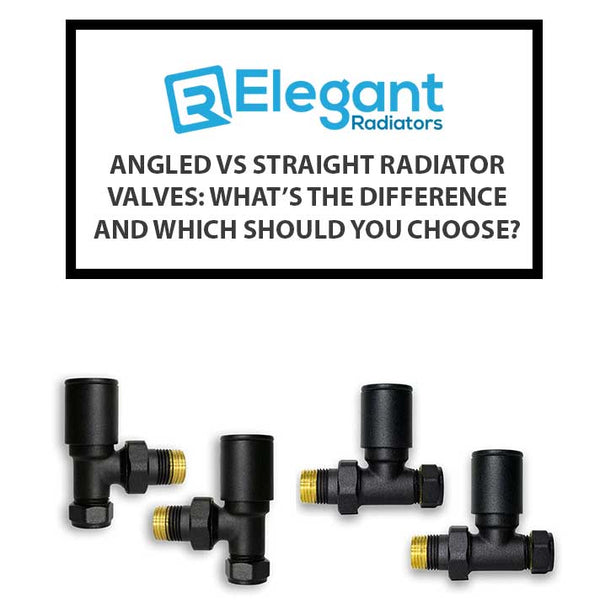How to Connect a Copper Pipe to a Towel Rail?

A towel rail is a stylish and functional addition to any bathroom, providing both warmth and a convenient place to dry towels. Connecting a copper pipe to a towel rail requires precision to ensure a secure and leak-free installation. Incorrect connections can lead to water leaks, inefficient heating, and potential plumbing damage. In this guide, we’ll walk you through the process step by step.
Tools & Materials Needed
Before starting, gather the following tools and materials:
• Copper pipe (typically 15mm or 22mm diameter)
• Pipe cutter or hacksaw (for cutting the copper pipe)
• Deburring tool or sandpaper (to smooth pipe edges after cutting)
• Adjustable wrench and spanners
• PTFE tape (for sealing threaded connections)
• Compression fittings or solder joints
• Flux, solder, and a blowtorch (if using solder joints)
• Towel rail valves (angled or straight, depending on pipe positioning)
• Pipe clips (for securing the pipe to the wall)
Once you have all the necessary materials, you can proceed with the installation.
Step-by-Step Guide to Connecting a Copper Pipe to a Towel Rail
1. Turn Off the Water Supply and Drain the System
Before making any modifications, turn off the water supply to avoid leaks or flooding. If your towel rail is part of a central heating system, switch off the boiler and drain the radiator circuit to remove any residual water in the pipes.
2. Measure and Cut the Copper Pipe
Measure the length of the copper pipe required for the connection. Using a pipe cutter or hacksaw, cut the pipe to the correct length. After cutting, use a deburring tool or sandpaper to remove any sharp edges inside and outside the pipe to ensure a smooth and secure connection.
3. Install the Towel Rail Valves
Towel rails have two connection points at the bottom, where valves need to be installed. The type of valve you choose depends on your pipe layout:
• Straight valves – If pipes come from the wall.
• Angled valves – If pipes come from the floor.
Before screwing the valves into place, wrap PTFE tape around the threaded parts to ensure a watertight seal. Tighten them securely using an adjustable wrench.
4. Connecting the Copper Pipe to the Towel Rail
There are three main methods for connecting the copper pipe to the towel rail:
a) Compression Fitting Connection
This is one of the easiest methods, as it does not require soldering.
• Slide the compression nut onto the copper pipe.
• Place the metal olive (ring) over the pipe end.
• Insert the pipe into the valve fitting.
• Tighten the compression nut using a wrench to create a watertight seal.
b) Soldered Joint Connection
Soldering provides a permanent and leak-proof connection but requires extra tools and expertise.
• Apply flux to the pipe end and inside the fitting.
• Insert the pipe into the fitting and heat it using a blowtorch.
• Once heated, apply solder around the joint and allow it to flow into the connection.
• Let it cool before proceeding.
c) Push-Fit Connection
Push-fit fittings provide a quick and tool-free installation.
• Cut the copper pipe cleanly.
• Push the pipe into the push-fit connector until it clicks into place.
Although easy to use, push-fit fittings are more common for plastic pipes rather than copper.
5. Secure the Pipes
Once the pipes are connected, use pipe clips to secure them along the wall. This prevents movement, which can cause strain on the connections over time.
6. Turn On the Water Supply & Check for Leaks
• Slowly turn the water supply back on and let the system fill up.
• Carefully inspect all connections for any signs of leakage.
• If you notice any leaks, gently tighten the fittings or add more PTFE tape if needed.
7. Bleed the Towel Rail
After installation, air may be trapped inside the towel rail, which can affect its heating efficiency. Use a radiator bleed key to release any trapped air from the top valve of the towel rail.
Additional Tips & Precautions
• Choose the right valves: Ensure you select the appropriate valve type based on your pipe’s position.
• Avoid over-tightening:Over-tightening compression fittings can damage the olive, causing leaks.
• Use pipe insulation: If the pipes run through cold areas, insulate them to minimize heat loss.
• Consider professional help: If you are unsure about soldering or pipework, hiring a plumber can save you time and prevent potential issues.
Connecting a copper pipe to a towel rail is a straightforward process if done correctly. Compression fittings offer a quick and easy solution, while soldering provides a more permanent connection. Once installed, always check for leaks and bleed the towel rail to ensure efficient heating. By following these steps, you can successfully install a towel rail that functions properly and enhances your bathroom’s comfort and aesthetics.







